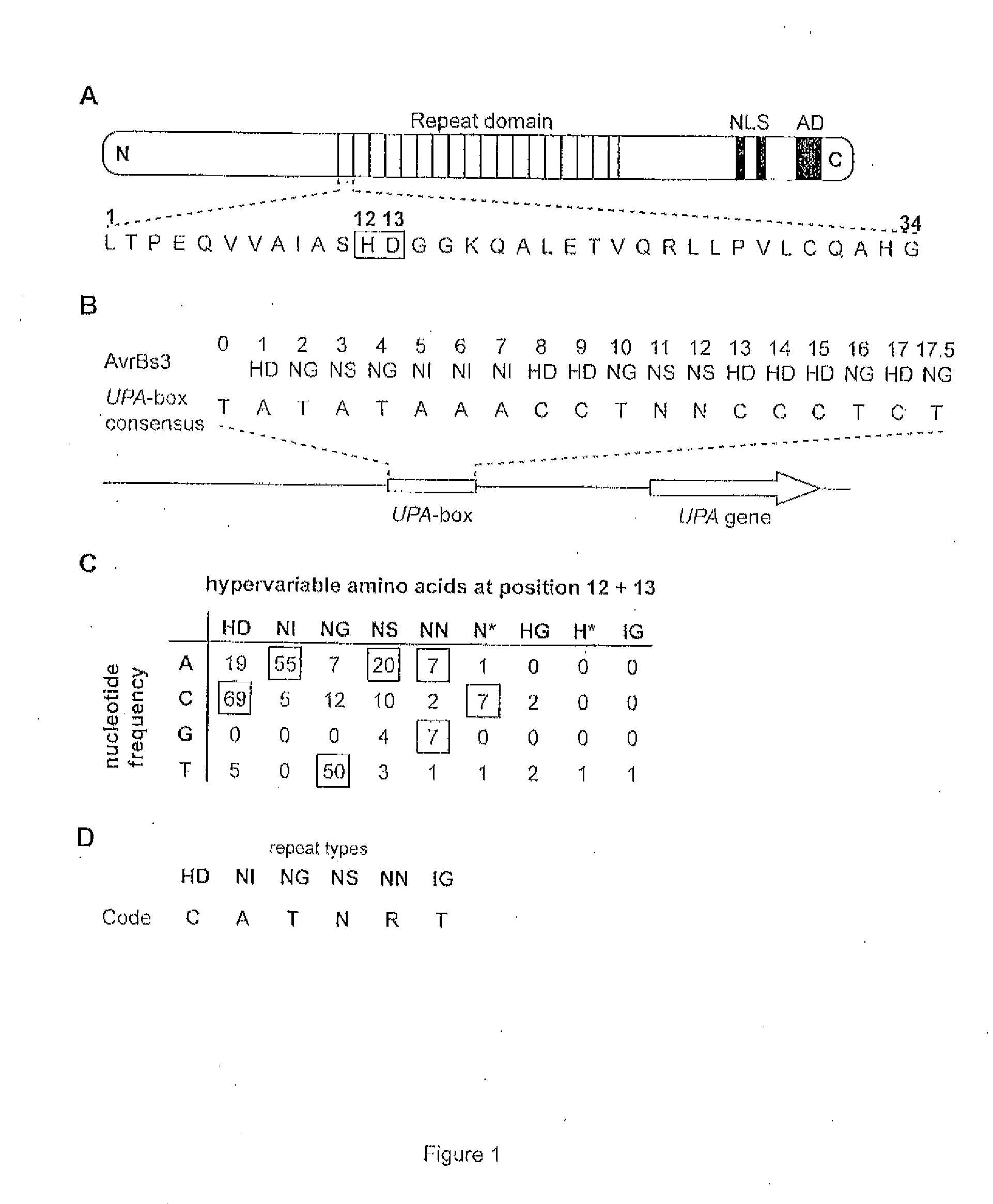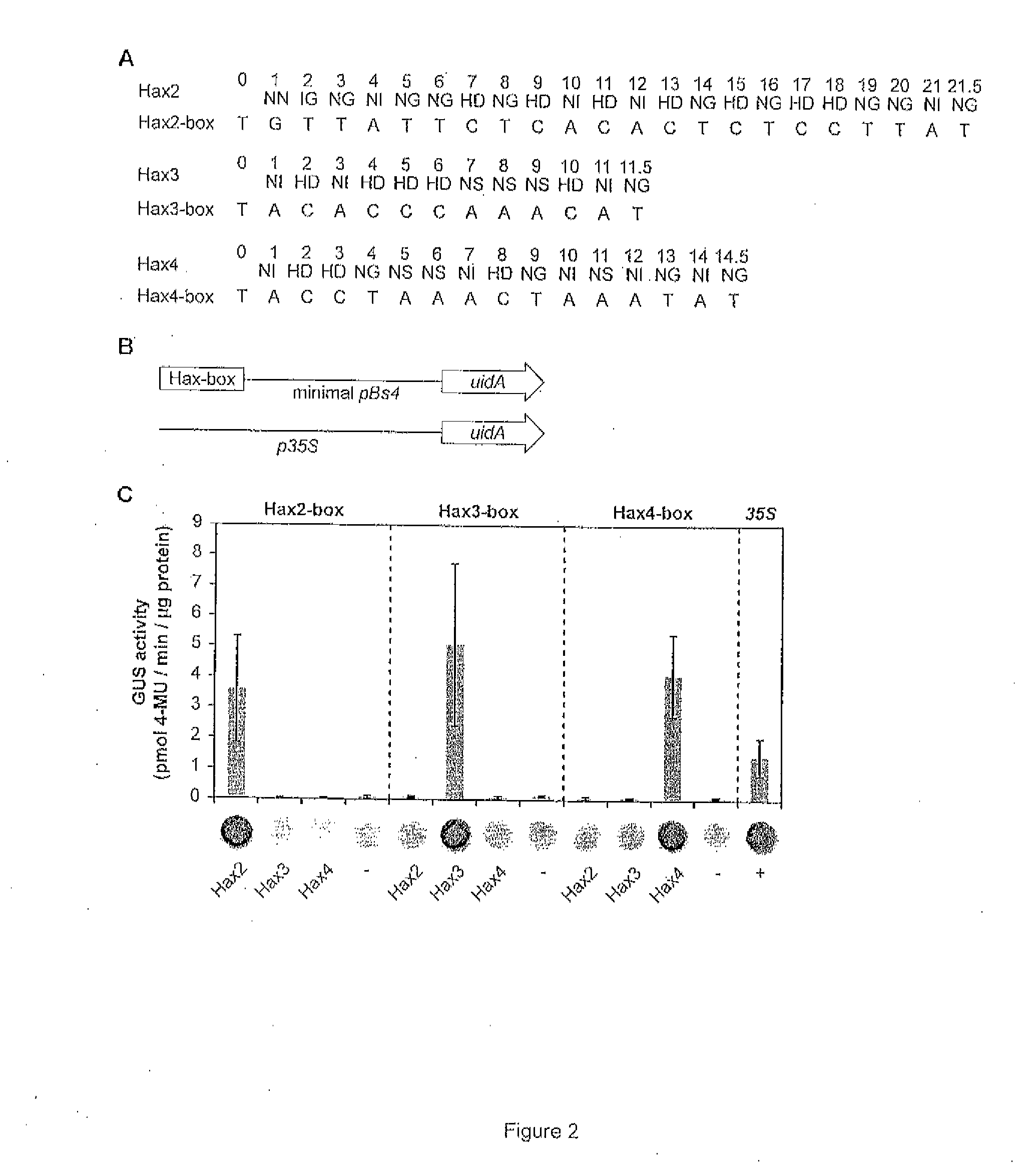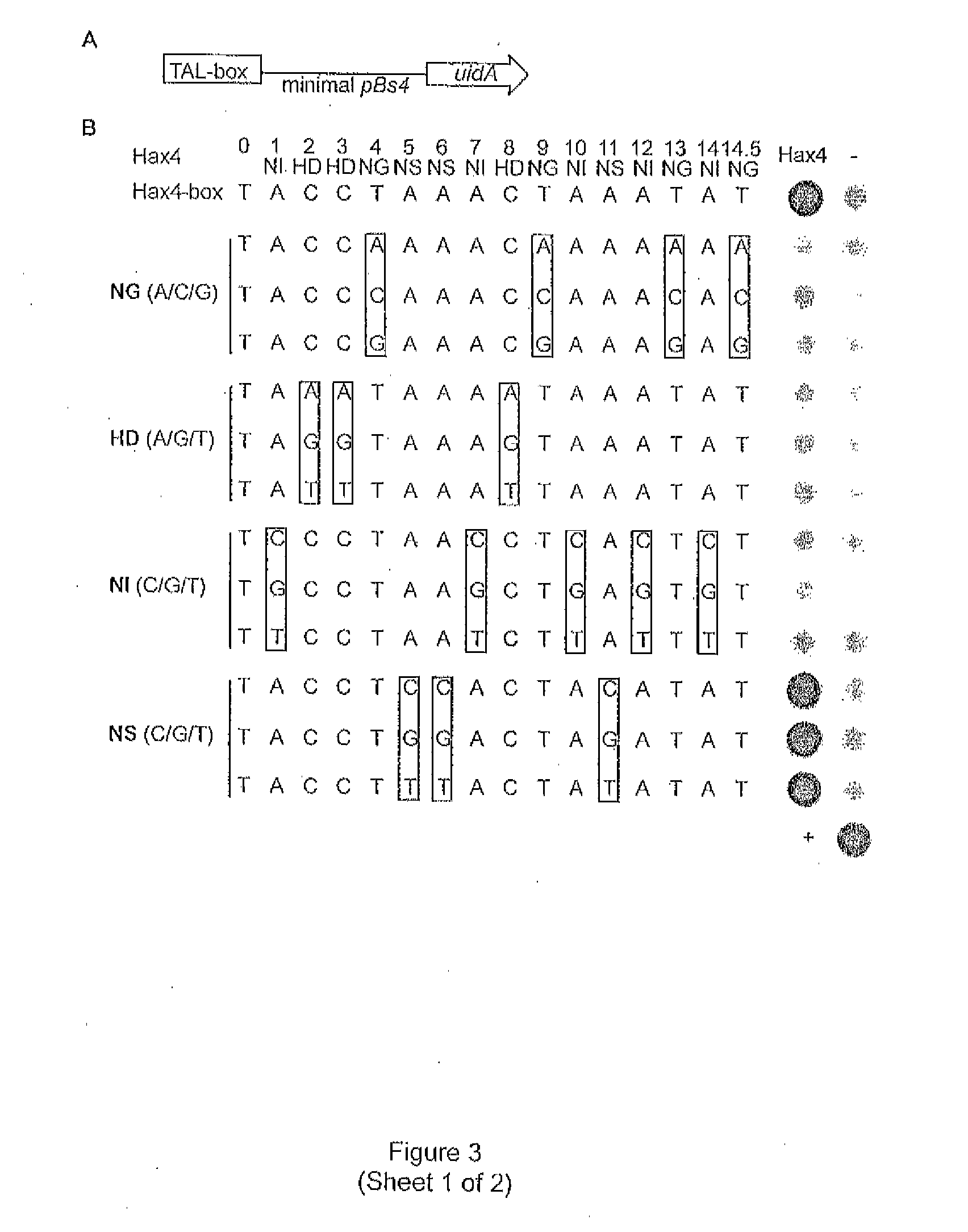Modular dna-binding domains and methods of use
a module and dna technology, applied in the field of modules dna binding domains and methods of use, can solve the problems of time-consuming, potentially quite costly, and technical demands of methods, and achieve the effect of enabling targeted dna modifications
- Summary
- Abstract
- Description
- Claims
- Application Information
AI Technical Summary
Benefits of technology
Problems solved by technology
Method used
Image
Examples
example 1
Identification of the Basis for DNA Specificity of TAL Effectors
[0316]The fact that AvrBs3 directly binds the UPA-box, a promoter element in induced target genes (Kay et al. (2007) Science 318, 648-651; Römer et al. (2007) Science 318:645-648), prompted us to investigate the basis for DNA-sequence specificity. Each repeat region generally consists of 34 amino acid, and the repeat units are nearly identical; however, amino acids 12 and 13 are hypervariable (Schornack et al. (2006) J. Plant Physiol. 163:256-272; FIG. 1A). The most C-terminal repeat of AvrBs3 shows sequence similarity to other repeat units only in its first 20 amino acids and is therefore referred to as half repeat. The repeat units can be classified into different repeat types based on their hypervariable 12th and 13th amino acids (FIG. 1B). Because the size of the UPA-box (18 (20) / 19 (21) bp) almost corresponds to the number of repeat units (17.5) in AvrBs3, we considered the possibility that one repeat unit of AvrBs...
example 2
Identification of a TAL Repeat Unit that Binds to G Nucleotides
[0351]The DNA binding domain of TAL effectors is composed of tandem-arranged 34-amino acid repeat units. The amino acid sequences of the repeat units are mostly conserved, except for two adjacent highly variable residues (HVRs) at positions 12 and 13 that define DNA target specificity (Boch et al. (2009) Science 326:1509-1512; Moscou & Bogdanove (2009) Science 326:1501). Functional analysis identified HVR motifs that bind preferentially to A (NI), C(HD), T (NG, IG) or equally well to G and A (NN) (Boch et al. (2009) Science 326:1509-1512). Bioinformatic analysis revealed HVRs that in the given promoter-TAL effector interactions match specifically to G (Moscou & Bogdanove (2009) Science 326:1501). However this, analysis was based on a single (HN & NA) or two (NK) interaction sites. In our view the number of interaction sites is too low to make reliable conclusions on the HVR specificity. Yet, these HVRs can be considered ...
example 3
Method for Generation of Designer Effectors Via Golden Gate Cloning
[0354]The DNA binding domain of TAL effectors is composed of tandem-arranged 34-amino acid repeat units. The amino acid sequences of the repeat units are mostly conserved, except for two adjacent highly variable residues (HVRs) at positions 12 and 13 that define DNA target specificity (Boch et al. (2009) Science 326:1509-1512; Moscou & Bogdanove (2009) Science 326:1501). Different HVR motifs bind with different levels of specificity to individual A, C, G or T nucleotides. Importantly, statistical analysis suggests that tandem arranged repeat units do not to interfere with the specificity of adjacent units (Moscou & Bogdanove (2009) Science 326:1501). Thus modular assembly of repeat units with pre-characterized specificities is likely to provide an efficient way for generation of DNA-recognition modules with desired DNA specificity.
[0355]However, the generation of DNA constructs that encode desired repeat domains is c...
PUM
| Property | Measurement | Unit |
|---|---|---|
| elongation factor | aaaaa | aaaaa |
| temperature | aaaaa | aaaaa |
| temperature | aaaaa | aaaaa |
Abstract
Description
Claims
Application Information
 Login to View More
Login to View More - R&D
- Intellectual Property
- Life Sciences
- Materials
- Tech Scout
- Unparalleled Data Quality
- Higher Quality Content
- 60% Fewer Hallucinations
Browse by: Latest US Patents, China's latest patents, Technical Efficacy Thesaurus, Application Domain, Technology Topic, Popular Technical Reports.
© 2025 PatSnap. All rights reserved.Legal|Privacy policy|Modern Slavery Act Transparency Statement|Sitemap|About US| Contact US: help@patsnap.com



